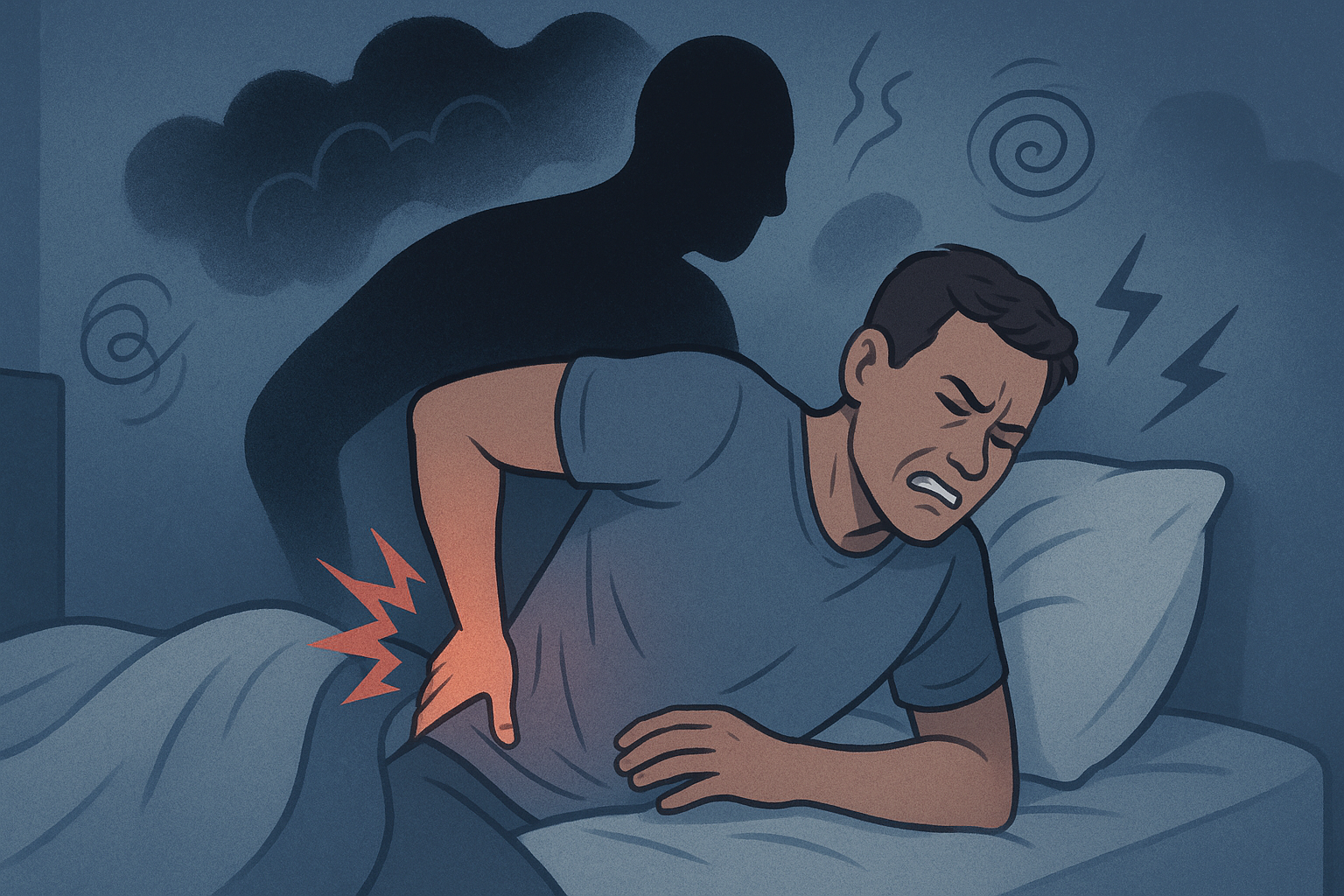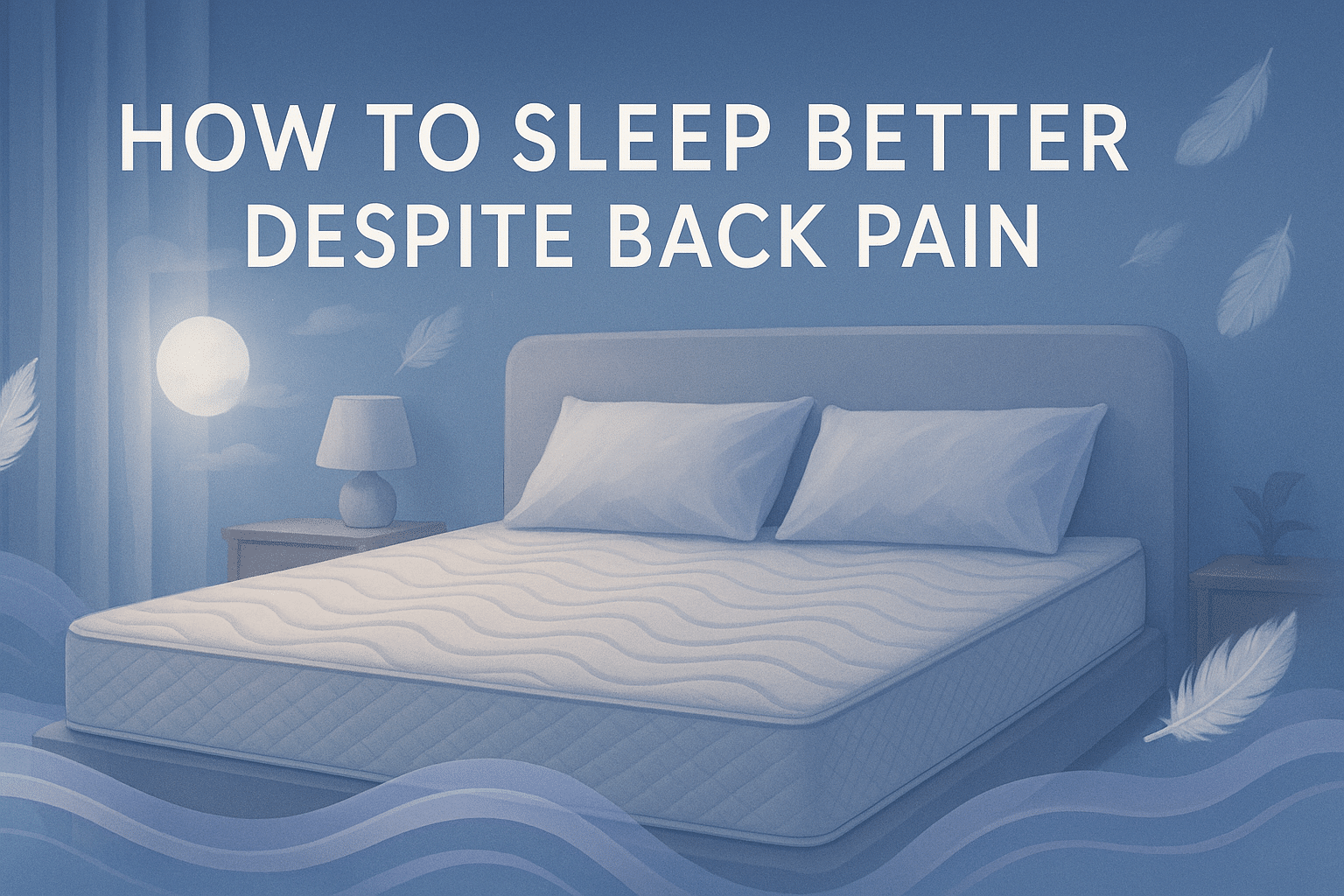How to Sleep Better Despite Back Pain
Back pain can be a real nightmare, especially when it affects your ability to get a good night’s sleep. Tossing and turning all night can leave you feeling exhausted and cranky the next day. But don’t worry, there are effective strategies to help you sleep better despite back pain. In this guide, we’ll explore practical tips and techniques to improve your sleep quality and wake up feeling refreshed. 🌙
Table of Contents
1. Introduction
2. Understanding the Link Between Back Pain and Sleep
3. Choosing the Right Mattress and Pillow
4. Optimal Sleeping Positions for Back Pain
5. Creating a Sleep-Friendly Environment
6. Incorporating Gentle Exercises and Stretches
7. Mindfulness and Relaxation Techniques
8. FAQs
9. Conclusion
Understanding the Link Between Back Pain and Sleep
It’s no secret that back pain can disrupt sleep. But why does this happen? 🤔 When you’re in pain, it’s difficult to find a comfortable position to fall asleep in, leading to frequent awakenings and poor sleep quality. Additionally, pain can increase stress and anxiety levels, further complicating your ability to relax and sleep peacefully. Understanding this connection is the first step toward finding relief.

Choosing the Right Mattress and Pillow
Your mattress and pillow play a crucial role in how well you sleep. 🛌 For those with back pain, a medium-firm mattress is often recommended as it provides the right balance of support and comfort. Look for a mattress that supports the natural curve of your spine. Similarly, choose a pillow that keeps your neck aligned with your spine. Memory foam or ergonomic pillows can be especially beneficial.
Optimal Sleeping Positions for Back Pain
The way you sleep can either alleviate or exacerbate your back pain. Here are some positions to consider:
Back Sleeping: Lying on your back is typically the best position for reducing back pain. Place a pillow under your knees to maintain the natural curve of your spine.
Side Sleeping: If you’re a side sleeper, draw your legs up slightly toward your chest and place a pillow between your knees. This helps align your hips, pelvis, and spine.
Avoid Stomach Sleeping: Sleeping on your stomach can strain your neck and back, so it’s best to avoid this position if possible.
Creating a Sleep-Friendly Environment
A conducive sleep environment can make a world of difference. 🌟 Ensure your bedroom is dark, quiet, and cool. Consider using blackout curtains, earplugs, or a white noise machine to block out disturbances. Keep electronic devices out of the bedroom to minimize distractions and create a serene atmosphere.
Incorporating Gentle Exercises and Stretches
Regular physical activity can help alleviate back pain and improve sleep. Aim for low-impact exercises like walking, swimming, or yoga. 🧘♂️ Additionally, incorporating gentle stretches before bedtime can help relax your muscles and reduce tension. Focus on stretches that target the back, hips, and legs for the best results.
Mindfulness and Relaxation Techniques
Stress and anxiety can worsen back pain and disrupt sleep. Incorporating mindfulness and relaxation techniques can help calm your mind and body. Try deep breathing exercises, progressive muscle relaxation, or meditation before bed. These practices can help you unwind and prepare for a restful night’s sleep. 🧘♀️
FAQs
Q: Can back pain be a sign of a serious condition?
A: Yes, back pain can sometimes indicate a more serious underlying condition. If your pain is severe, persistent, or accompanied by other symptoms like numbness or weakness, it’s essential to seek medical advice.
Q: How long should I try a new mattress before deciding it’s not right for me?
A: It’s recommended to try a new mattress for at least 30 days. This allows your body to adjust and gives you a better sense of whether it’s suitable for your back pain.
Q: Are there any specific yoga poses that can help with back pain?
A: Yes, poses like Child’s Pose, Cat-Cow Stretch, and Supine Twist are known to help relieve back pain. Always consult with a yoga instructor for guidance tailored to your needs.
Conclusion
Back pain doesn’t have to rob you of restorative sleep. By understanding the connection between back pain and sleep, choosing the right mattress and pillow, and incorporating supportive habits, you can improve your sleep quality significantly. Remember, small changes can make a big difference. Here’s to waking up refreshed and ready to take on the day! 🌅
